Updated April, 2025, with contributions by Chris Boylan
Hard to imagine, but it has now been three years since Apple put the venerable iPod out to pasture, and while it would be pretentious to suggest that the iPod was the single worst thing that happened to audio quality going back to the launch of DCC (Digital Compact Cassette) and the Tice TPT Clock (I won’t mention which stereo magazine promoted that nonsense), the reality is that the best-selling DAP (Digital Audio Player) of all-time likely did have an influence on the evolution of high resolution audio. It’s unlikely that audiophile-oriented streaming platforms such as TIDAL and Qobuz would have a customer base in 2025 had the iPod and iTunes not created a generation of low resolution audio listeners, with perhaps no prior awareness of how great music could actually sound.
In response, Hi-Res Audio (or high resolution audio) may have been a form of pushback against the low resolution standards of the day. With high resolution audio, music lovers could finally hear music the way the artists, engineers and producers intended it to be heard. Huzzah! The issue is that 99% of the music listening population has no idea what that term means. And that is not entirely surprising. Many audiophiles don’t either.
Are we the only ones who find it strange that the “Hi-Res Audio” branding appears on the packaging of audio components that don’t offer actual high resolution audio as a feature? Unless you’re a manufacturer selling wireless loudspeakers that support hi-res streaming, or you’re just trying to cash in on the latest buzzwords — why are you putting that on your packaging, anyway? I’m gonna say it’s that cool logo.
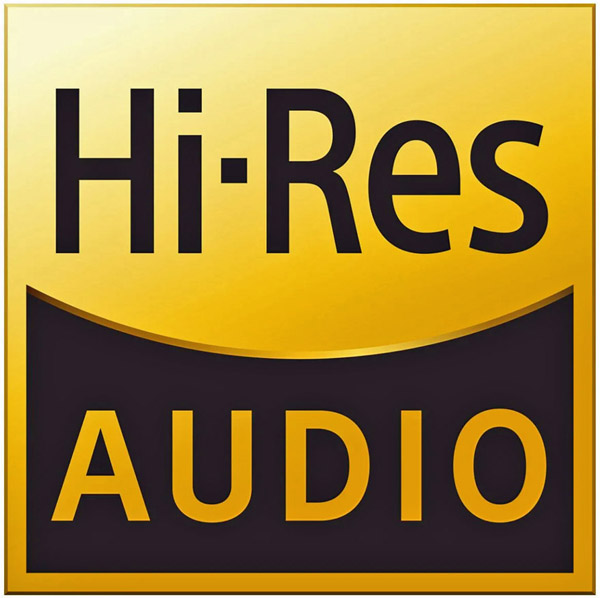
But high resolution audio is much more than just a logo. And legitimate use of that logo does come with certain requirements, which we’ll cover soon (I promise).

What is Hi-Res Audio vs. High Resolution Audio?
The terms Hi-Res Audio and High-Resolution Audio are used interchangeably but there is one specific difference (we’ll get to that). They both refer to a collection of digital audio formats that have a higher bit depth and/or sampling frequency than the standard 16-bit/44.1kHz (CD-quality) audio format. Bit depth and sampling rate are what define the precision with which digital audio can capture organic analog waveforms. The goal of high resolution audio is to provide a listening experience that is closer to the original recording or live performance, with greater detail, clarity, and dynamic range.
For audio purists, “real” Hi-Res Audio is typically considered to be digital audio that has a sample rate of 96kHz or higher and a bit depth of 24 bits or higher. Some high resolution audio formats can even reach a sample rate of 384KHz and a bit depth of 32 bits, although these formats are less common. The greater the numbers, the more storage and transmission bandwidth is required for each track and album. Some will argue that 16-bit/48.1kHz qualifies as Hi-Res Audio or high resolution audio (since it is technically higher than CD’s 16/44), but I’m not sure that distinction is great enough to convince mainstream consumers of its validity.
It’s worth noting that not all high-resolution audio is created equal, and there are no real established standards for what constitutes high resolution audio. However, there are organizations like the Digital Entertainment Group (DEG), the CEA and the Japan Audio Society (JAS) that have established guidelines for what qualifies to use the afore-mentioned Hi-Res Audio logo. To earn that logo, a Hi-Res Audio certified audio product must support 24-bit/96KHz (or higher) digital file playback. So while “Hi-Res Audio” and “High Resolution Audio” may be used interchangeably, it’s gotta be 24/96 or above to get that shiny Hi-Res Audio logo.
32-bit/384kHz? Yes, it’s possible. And when there is any music worth mentioning available here, we’ll include that as part of the conversation. There is a point of diminishing returns, people.
It’s important to note that Hi-Res Audio is not just about increasing the audio bitrate. The key is to capture and preserve as much detail as possible from the original recording, so that the listener can experience the music as close as possible to the way it was intended to be heard.
Hi-Res Audio is designed to provide a more accurate and detailed representation of the original recording, preserving the subtleties and nuances of the music that can be lost in the compression process of other audio formats like MP3 or Dolby Digital. Even Dolby and DTS have their “High Res Audio” variants with stereo and multi-channel lossless recordings that can be sampled at 96 KHz with 24-bit precision without any loss via Dolby TrueHD or DTS-HD Master Audio formats.
How to Do High-Res Audio
To play Hi-Res Audio files, you’ll need an audio system that supports these higher-quality formats and a digital-to-analog converter (DAC) that can process the higher-resolution data, converting it to analog for playback on headphones or speakers.
DACs are integrated into a wide range of components including wireless headphones, wireless loudspeakers, wireless turntables, wireless IEMs, network amplifiers and streamers, computers, CD players, smartphones and tablets, Dongle DACs, DAPs, A/V receivers and integrated amplifiers. Even TVs have a built-in DAC (or two) to convert those Netflix flicks into something your TV speakers can play. There are even standalone audiophile DACs whose sole purpose is to take a digital input signal and convert it to an analog output.
Not all DACs are created equal and, depending on the age of the chipset, they might only be able to decode up to 16-bit/44.1kHz — which is not high resolution audio. But in these enlightened times of trickle-down technology, even $329 streamers like the WiiM Ultra can support High Resolution Audio playback. Its ESS ES9038 Q2M Sabre DAC chip supports up to 24-bit/192kHz sampling rates. It can even play DSD and DXD files (more on those later).
High-Res Audio Formats?

There are several high-resolution audio formats and file types, including:
- FLAC (Free Lossless Audio Codec): This is a popular open-source format that provides lossless compression, meaning that the audio files are compressed in size without any loss of quality. FLAC files typically have a bit depth of 16 or 24 bits and a sample rate of 44.1kHz to 192kHz.
- ALAC (Apple Lossless Audio Codec): This is a proprietary format developed by Apple for use in their products. Like FLAC, ALAC provides lossless compression and supports high-resolution audio with bit depths of 16 or 24 bits and sample rates up to 192kHz.
- PCM (Pulse-Code Modulation): PCM isn’t a specific file format like WAV or MP3, but is instead a technique or method for converting analog sound into digital data. CDs, DVDs and Blu-ray Discs typically all have a PCM soundtrack and PCM is used for file formats such as WAV and DXD. It has many variations of bit depth and sampling rates up to 32-bits/384Khz.
- WAV (Waveform Audio File Format): This is a popular and widely used container format that supports high-resolution audio with bit depths of up to 32 bits and sample rates up to 384kHz. While WAV files can contain compressed audio files, they typically use PCM (pulse code modulation) to store uncompressed digital audio, making them larger in file size but providing the highest quality audio.
- AIFF (Audio Interchange File Format): This is another popular and widely used format that is like WAV. It supports high-resolution audio with bit depths up to 32 bits and sample rates up to 384kHz and is also typically uncompressed.
- DSD (Direct Stream Digital): This is a proprietary format that was originally developed for Sony’s Super Audio CD (SACD) physical media format and uses a different encoding method compared to traditional PCM audio formats. DSD uses a single-bit encoding system with a high sample rate (typically 2.8MHz or 5.6MHz) to provide a high level of audio quality. While first only available on SACD discs, DSD files are now available for streaming or download on some services
- DXD (Digital eXtreme Definition): This is a high-resolution audio format developed mainly for mixing and mastering, particularly for editing and manipulating DSD recordings as DSD recordings themselves are somewhat unwieldy to edit directly. DXD features a 24-bit Pulse-Code Modulation (PCM) format with a sampling rate of 352.8 kHz. It is also available as a distribution format for high resolution audio files.
These are some of the most common high-resolution audio formats. The choice of format will depend on your specific needs, the service you are using to stream or download digital music and the type of playback device you are using. Some devices may not support all these formats, so it’s important to check compatibility before purchasing high-resolution audio content and hardware.
DSD and DXD are probably the least common formats and are generally only supported by high-end DAPs (Digital Audio Players), SACD Players, DACs, Dongle DACs, network amplifiers and streamers, and a very limited number of wireless loudspeakers.
Few of the mainstream audiophile streaming platforms like TIDAL offer DSD or DXD file formats, however Qobuz recently added support for both DSD and DXD files for purchase/download only (not for streaming). High resolution audio files in these file formats can be purchased from audiophile music labels, but the files are generally very large so they’re better suited for DAPs with removable storage or high-end music servers like a Roon Nucleus with large capacity hard drives.
Is Hi-Res Audio better?
Whether HI-Res Audio is “better” or not depends on various factors, such as the quality of your playback equipment and your personal preferences. In general, Hi-Res Audio provides a more accurate and detailed representation of the original audio recording, as it has a higher sampling frequency and bit depth compared to standard audio formats. This can result in a wider frequency range, better imaging, deeper bass, and improved overall sound quality.
Additionally, the quality of the source material also plays a significant role in the perceived improvement of Hi-Res Audio. If the original recording was made with low-quality equipment or poor production techniques, upscaling it to Hi-Res Audio may not result in a significant improvement in sound quality, if any.
Related Podcast: Dr. Mark Waldrep Debunks Hi-Res Audio Myths

Best Hi-Res Audio music streaming platforms?
There are several music streaming platforms that offer Hi-Res Audio content, including:
- TIDAL: TIDAL is one of the largest Hi-Res Audio streaming platforms, offering millions of tracks in high-resolution audio format, including FLAC and ALAC. TIDAL also offers exclusive content, such as concerts and music videos, and supports offline playback. TIDAL also offers a selection of tracks in Dolby Atmos spatial audio.
- Qobuz: Qobuz is another popular Hi-Res Audio streaming platform, offering a wide selection of high-resolution audio tracks, including FLAC and ALAC files for streaming and even DSD and DXD files for separate purchase and download. Qobuz also offers detailed album information and editorial content, making it a great choice for music lovers.
- Deezer: Deezer offers a selection of Hi-Res Audio tracks, including FLAC and ALAC formats, with plans starting at a higher price point than its standard offering.
- Apple Music: Apple Music offers Hi-Resolution audio up to 24 bit/192 kHz, although not all Apple devices can decode it without special adapters. Apple Music also offers a selection of tracks in Dolby Atmos spatial audio. Apple Music acquired the Primephonic classical music streaming service in 2021 and now offers a wide selection of classical music titles in 24/192 high res audio.
- Amazon Music Standard/Amazon Music Unlimited: Amazon Music offers a large selection of music tracks in “HD” format (lossless CD quality) and “UHD” format (High Res Audio). But to get them, you’ll have to pony up for a monthly subscription fee on top of your Prime membership. The free version of Amazon Music with Prime does not support HD or UHD music tracks, nor even direct track access. Two tiers of Amazon Music (Amazon Music Standard and Amazon Music Unlimited) both offer Hi-Res Audio tracks, including FLAC and ALAC formats. The “Unlimited” version also includes one free audiobook per month. Amazon Music Standard and Unlimited also offer a good select of music tracks in Dolby Atmos and Sony 360 Reality Audio.
- Hi-Fi Cast: Hi-Fi Cast is a newer player in the Hi-Res Audio streaming space, offering a large selection of high-resolution audio tracks, including FLAC, ALAC, and DSD.
Notice something missing from that list? We must point out that Spotify — the world’s most popular streaming service — still does not offer any lossless or hi-res audio music. Spotify HiFi was announced in 2021, but never came to market. Even now as we update this in April, 2025, we’re still waiting for Spotify HiFi. The latest rumors suggest that Spotify HiFi may be launched later this year (2025) as part of a “Spotify Music Pro” upgrade and may command a premium of an additional $6/month (on top of Spotify’s $12/month Premium plan). We shall see.
The Bottom Line
Hi Res Audio or high resolution audio is intended to provide an improvement over lossy music formats like MP3 and even lossless CDs by providing a more natural-sounding representation of music and sound by using more powerful and more precise digital audio capture and playback techniques. The availability of Hi-Res Audio content can vary among platforms, and some platforms may offer higher quality streams than others. When choosing a Hi-Res Audio streaming platform – whether a streaming service or the physical hardware to play your music on – it’s important to consider the selection of available content, the quality of the streams, the formats supported and the price. Is it worth the investment? Only your ears can tell you that, so we encourage you to try it yourself and see.
Related: WTF is a DAC?





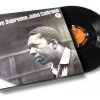
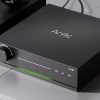








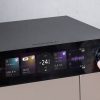










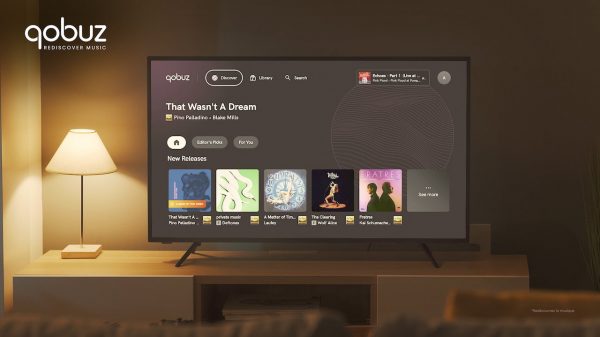


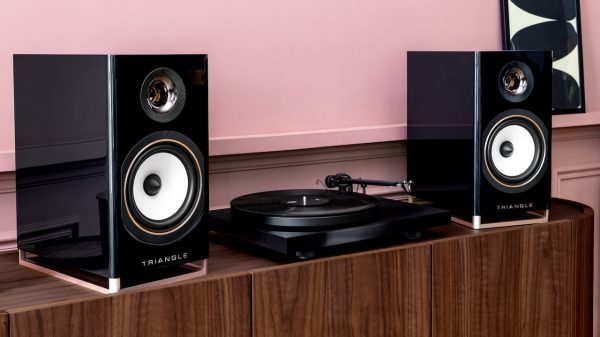

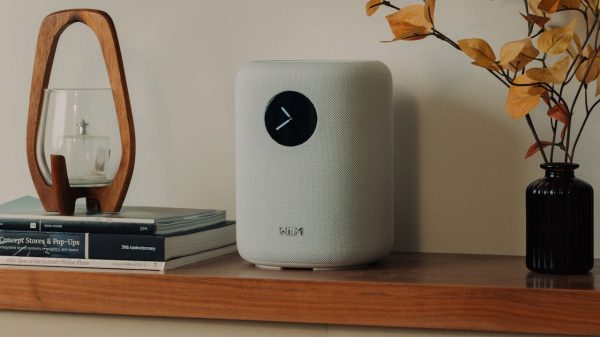


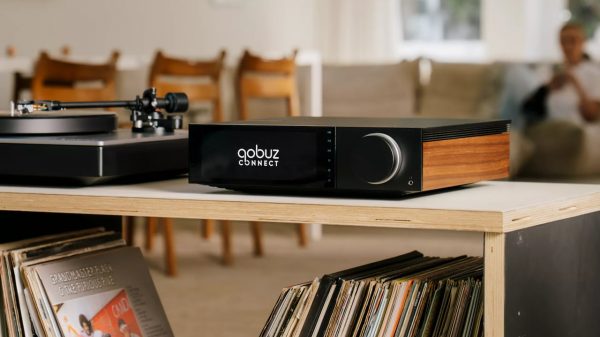
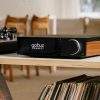












Chris Hallett
February 19, 2023 at 5:22 am
“high resolution” digital audio is pointless. Standard CD quality digital audio isn’t just good enough, it’s better than the human ear could ever distinguish. It was specifically designed that way on purpose originally.
If you get sucked into woo and marketing bullshit, I feel sorry for you, but then the saying “a fool and his money are easily parted” has existed for centuries, long before there even was such a thing as audio playback.
Jim ramsey
April 17, 2023 at 3:19 pm
Old ears & damaged hearing coupled with the fact that most of my music listening is for background thru distributed audio makes hi-res unimportant for me. WTS, I perceived a difference, on my mid-level 5.1.2 system with Amazon hi-res vs Spotify free. Whether that difference was real or imagined matters not as I don’t listen often via that system. So, Spotify premium is ok until I upgrade my Yam avr and then I’ll go with Amazon Music.